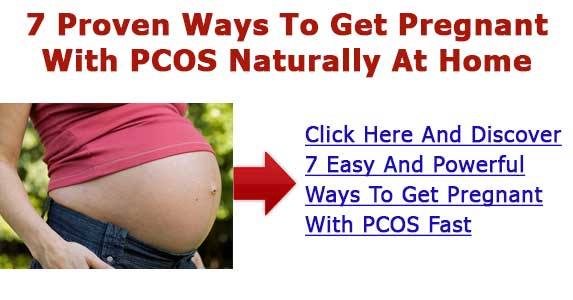Becoming Pregnant With Ovarian Cyst - Discover Powerful Tips To Get Pregnant With PCOS
How you can use Gonadotropins to decrease symptoms of Polycystic Ovarian
Syndrome and help get your pregnant
Injectable Gonadotropins are also known as FSH treatments because they target
the Follicle Stimulating Hormone that your body needs ( can I get pregnant with ovarian cysts ). By using these medications you will quicken
ovulation and the development of your eggs. Follicle Stimulating Hormones are
released by the pituitary gland when it is time to create an egg follicle.
Gonadotropins directly increase the amount of FSH circulating in the body and
this promotes the development of a mature egg and ovulation. Your doctor will need to inspect your body’s
advancement through using different tests and an ultrasound. When it looks like
you are close to ovulating he or she can let you know so that you can have
intercourse. The success rate for ovulation for women with PCOS after using
gonadotropins is astounding at more than 90 percent. The ovulation success
rates are very high but the pregnancy success rates stays at about 25% per
month. Clomid is the first choice of
treatment for PCOS but only 40% of women respond and conceive so after that FSH
is administered. Clomid is the first
choice for treatment because oral medications such as this are less expensive
and easier than injections.
There are physicians specially trained in reproductive endocrinology that can
help you conceive if you are having problems ( read more now ). These specialists are best able
to fully manage any fertility issues. It is better to see a fertility
specialist instead of only an OB-GYN because they generally offer more
experienced monitoring. PCOS may cause other fertility problems that may be
managed better by reproductive endocrinology experts. A typical PCOS treatment
can mimic nature with pregnancy rates of 20% per month for women younger than
35 with no additional factors. Before the appointment sit down for a few
minutes and think of any related symptoms you may be experiencing. You should
make a list of your last three menstrual cycles and their length. Having all
your medical history and information in the meeting will be beneficial to look
at your situation from all angles. To
ensure a thorough examination the doctor will want a semen analysis to
determine that there are no other factors preventing pregnancy. After all the
tests have been finished you and the doctor can discuss a pregnancy plan for
you and your partner.
Discover how gamete intrafallopian
transfer can help you get pregnant with PCOS
GIFT is a way to help people with PCOS or other infertility disorders conceive
through assisted reproductive technologies. This infertility treatment
procedure differs from in-vitro fertilization because the fertilization for
GIFT occurs inside the body. This process is helpful for women with PCOS
because often the egg cannot travel through the fallopian tube to be
fertilized. In order to encourage the
creation of multiple eggs you will need to take a series of hormone injections.
The eggs will be collected by inserting a hollow through your abdomen and into
the ovaries. The multiple eggs are then placed into a thin tube along with
sperm to be used. After the eggs and sperm are together they are called gametes
and these are placed into the fallopian tubes during a surgical procedure. Your
reproductive system should take control from this point and continue along with
a normal pregnancy. In 35% of cases the individuals who use GIFT successfully
get pregnant. Because the GIFT technique uses many eggs there is a threat that
you will have multiple births.
 get-pregnant-with-pcos-35
+
get-pregnant-with-pcos-35
+
You can get pregnant and stop Polycystic Ovarian Syndrome by using
Tamoxifen
The way tamoxifen treatments work is similar to clomiphene in how it stops
estrogen production and increases fertility ( becoming pregnant with ovarian cyst ). Tamoxifen differs from clomiphene
because it doesn’t raise the levels of Luteinizing Hormone and Follicle
Stimulating Hormone. Raising LH levels can lead to miscarriages for women with
Poly-cystic Ovarian Syndrome because they are already associated with high
levels of LH. Tamoxifen works by increasing estrogen levels by direct action on
the ovary rather than through the hypothalamic-pituitary axis. The suggested
dose in ovulation induction is 20-80 mg daily for 3 to 5 days. When used in a
short period like this tamoxifen does not appear to be associated with any
increased risk of ovarian malignancy. An ovulation rate of 50-90% has been
found in women that use tamoxifen. When tamoxifen is used as treatment for
women with PCOS a pregnancy rate of 30-50% is seen. Because tamoxifen does not cause hyper
stimulation there is not risk of multiple pregnancies. In the end Tamoxifen is a good alternative to
clomiphene in women with PCOS and clomiphene-resistant cases.
